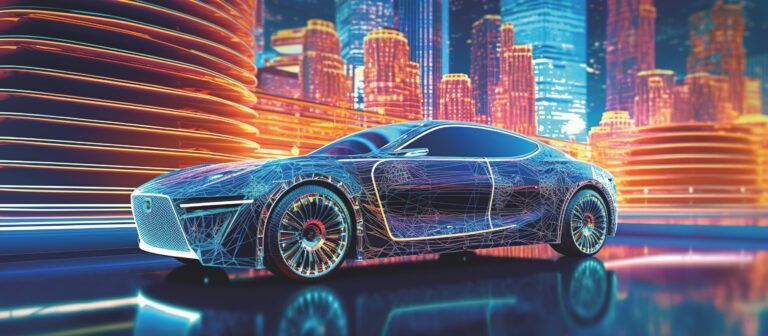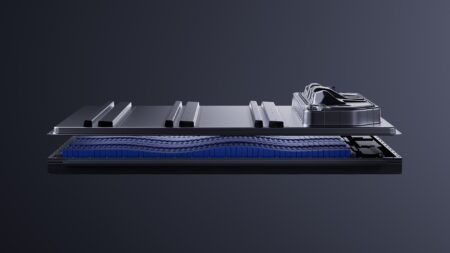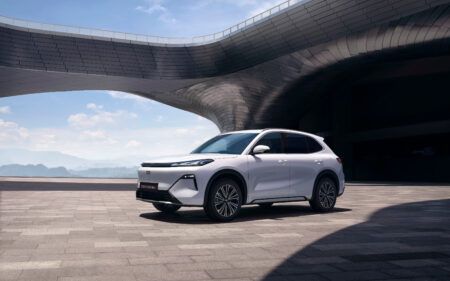The superstructure and components of a vehicle may soon contribute to its power and electric functions – piezoelectric, electroactive, triboelectric, energetic materials all happen outside of and independent from the battery pack. So can the electrical sum of vehicle parts make the difference to future transportation?
One EV can use 10,000 times as much lithium as the near-ubiquitous smartphone, which puts pressure on both markets. Carbon targets will mean considerably more electric cars on the roads, the supply and function of which will have to be sustainable. The International Energy Agency (IEA) predicts that by 2040, 80% of battery storage will be used in light-duty EVs, requiring a 40-fold increase in lithium and nickel production, and over 20 times as much copper, graphite and cobalt compared with 2020. The consequent squeeze on serving global markets will be intense.
The more a vehicle can be electrified and energised independent of a traditional EV battery pack the better. This might mean limited support like powering windows and air conditioning, or large-scale battery support or integration within or as the structure of the vehicle.
Structural power materials, integrated photovoltaics, electroactive polymers, and triboelectric systems each have a part to play in building a more sustainable electric vehicle solution. Over the past 15 years, automotive philosopher Dr Paul Nieuwenhuis, formerly senior lecturer and co-director, Electric Vehicle Centre of Excellence (EVCE), Cardiff University, has been looking at the human aspects of automobility and our relationship with motorised transport and the broader environment. “Observers see cars too much as a transport system, but that is only a (minor) aspect of their meaning,” he says. “We can change nothing without understanding that. That is why we are now making the same cars but electric, rather than rethinking the car itself. I am exploring ways in which changes in these fundamental cultural, philosophical, economic, and social factors can be addressed, after which improvements in our relationship with our environment will become automatic.”
The parts of the whole
Part of ‘rethinking the car itself’ is how the vehicle’s structure could be a source of power. The light weighting of a vehicle using materials like polymer composites takes on a particular importance when trying to make up for the “parasitic mass” of a heavy battery, the weight of which restricts the range it is meant to provide. However, there is an answer beyond that of continually increasing energy density: structural power composites (SPCs) are lightweight multifunctional materials, which combine mechanical load bearing and energy storage (structural batteries (SBs) or structural supercapacitors (SSCs)). The integration of energy storage capability into carbon fiber reinforced polymer composites has weight reduction advantages with implications on net-zero targets. Given that about 25% of an EV’s weight is in the battery and energy density cannot extend a vehicle’s range indefinitely, the potential of SPCs in increasing the viability of electric transportation is clear.
Structural batteries are exceptionally well-suited for integration into electric vehicles. By utilizing the vehicle’s structure for energy storage, the space needed for traditional battery packs dramatically reduce, resulting in more interior space and a lighter vehicle. “It’s clear that structural batteries have the potential to revolutionize the electric vehicle industry,” says Dr Johanna Xu, researcher in material and computational mechanics at Chalmers University. “In our recent life cycle analysis study, a finding regarding the utilization of a vehicle with structural batteries was highlighted. Using a vehicle for a longer time is beneficial as it allows for more energy savings throughout the life cycle. This implies that structural batteries might be particularly advantageous when employed in vehicles with high utilization rates, such as taxis or buses, where the energy-saving potential can be maximized.”
Xu says much of the research at Chalmers is devoted to understanding the interaction between Li and carbon fibers, shedding light on how they interact under various conditions. “Some of our findings reveal that at slower charge/discharge rates, Li distributes uniformly in both transverse and longitudinal directions of the carbon fiber,” says Xu. “Conversely, at faster rates, Li tends to be trapped in the core of the fiber, with some instances of Li plating found between the solid electrolyte interphase (SEI) and the fiber’s surface. This understanding is vital for mitigating extensive capacity loss. It’s also crucial in developing carbon fibers with customizable multifunctional properties for use in energy storage composites, especially in structural battery applications. Different processing parameters play a crucial role in determining the microstructure and, subsequently, the mechanical and electrochemical performance of the carbon fibers. Importantly, our studies emphasize the trade-off that researchers must consider when designing multifunctional carbon fibers—balancing high tensile strength with high electrochemical capacity. This research contributes to the understanding of tailoring carbon fibers to serve as electrodes in structural battery composites, potentially leading to improved performance and enhanced energy storage capabilities.”
The team has developed a robust manufacturing procedure, enabling the repeated production of structural battery composite cells with doubled multifunctional performance and size compared with the state-of-the-art. “This scalable approach is critical for achieving commercial viability,” says Xu.
Supporting power
Vehicle-integrated photovoltaics (VIPV) could be another way of incorporating energy production. Researchers at Fraunhofer are developing different technologies towards the integration of solar cells (especially standard Si-wafer based solar cell types) into vehicles: “For trucks, we are looking at especially light weight and robust setups, which can be integrated in truck box bodies and electrical systems and connections to the high voltage battery storage,” explains Dr Martin Heinrich, head of group encapsulation and integration at the Department of Module Technology. “For cars, we are looking at different module technologies for the different surfaces on the cars and on approaches, which can be integrated into a vehicle production line, and offer high efficiency but also pristine aesthetics. For power integration in cars, we are looking at different methods to go directly into the high voltage battery or via the low voltage system first.”
The amount of a vehicle’s power that can be generated in this way depends on the vehicle and situation of the driver, says Heinrich. For cars it can be in the range of around 13-23% just for the roof, but even higher if more areas of the car are used. For trucks it will be in the range of 5-15%, for vans it can go up to 60%. “The solar integration on vehicles offers a way to reduce (external) consumption in full digits. There are not a lot of technologies which can achieve this, and we believe it is an important technological step to reduce the external energy needs and consumption of vehicles.”
The team used half-cut solar cells glued with electrically conductive adhesive like roof-tile shingles to get the front to rear interconnection. Different application cases were used for different module setups. For trucks the researchers are using an ETFE foil-GFRP setup, while for cars, a glass-glass setup (for the roof) is used and an ETFE-foil-metal setup in cases where glass-glass cannot be used (such as the hood & sides). All the setups are laminated with encapsulation foils like EVA. “In the future we will have tandem cells like perovskites on Si or III-V solar cells with two or more solar cells stacked on top of each other in vehicle bodies,” says Heinrich. The research is ongoing but advancing at pace.
Smart tires
Car tire pressure monitoring systems (TPMS) are evolving in complexity into systems capable of measuring the coefficient of friction between tires and the road surface, vehicle speed, tire pressure, and tire load. As the vehicle becomes more self-aware of its constituents and dynamics, energy is required that can, in some instances, be harvested to enable operation in severe tire environments. Known as triboelectric energy, Professor Hiroshi Tani, Department of Mechanical Engineering, Kansai University, is researching a technology to use a triboelectric nanogenerator (TENG) built into a tire as a power source for TPMS in a joint research project with Sumitomo Rubber Industries. “The optimization of the TENG structure and the adhesion method to tire are challenges in integrating TENGs into tires, because the inside of a tire is an extremely harsh environment and because tires are made of rubber, which expands and contracts rapidly, making it difficult to achieve strong adhesion,” he says. “In addition, it is not desirable to dispose of the TENG at the same time as the tire because the life of a tire is so short. Therefore, we are developing TENGs that can be attached to and detached from tires.”
As automated driving develops, Tani believes TENGs will be useful as a power source for constantly monitoring the coefficient of friction between the tires and the road surface, or to monitor the load acting on each tire and feed this information back to the driver.
“Since car batteries are constantly evolving, it is naturally possible for a car to provide all its power from its own battery. However, it is also important to reduce power wiring, and I believe that environmental power generation, which is the subject of my research, is another theme.”
With a combination of various novel power and energy storage materials and systems, the result could be greater than the sum of its parts. If the structure of the vehicle contains the power and the storage, then the weight of and the space within the car will be different along with its range, opening revolutionary design possibilities and cost implications.
Could there be a revolution in design and manufacture whereby the vehicle becomes its use and more than a mere conveyance? “In terms of design, I think designers are keen to go this way, but the market has to accept it, so things are moving gradually,” says Nieuwenhuis.
“Whether a vehicle’s structure will fully power and guide itself is a subject of ongoing research and development in the field,” observes Xu. “This research spans over even more disciplines to also include battery management systems and electrical power engineering.”
The vehicle of the future may be electric in many ways beyond traditional electric motors, batteries and displays. The very materials from which it and its components are comprised would be activated to enable better driver ergonomics plus increased comfort and activity within the vehicle, as well as enhanced vehicle functions, whether human-driven or autonomous.





